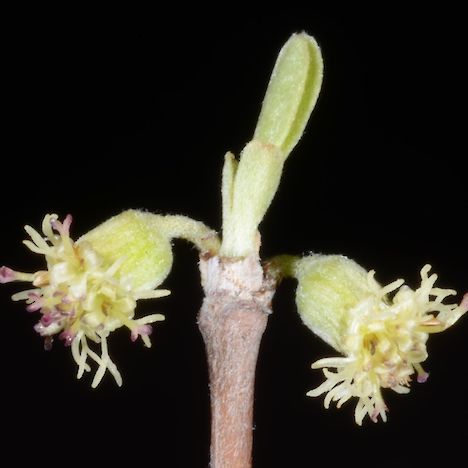Threat category:
Threatened: Nationally Endangered?Regions:
Nelson-Tasman, Marlborough, Canterbury, Otago, SouthlandDistribution:
South Island
Key Features
- Small, deciduous tree to 9 m tall, with a spreading canopy and thick, corky, furrowed bark.
- Young twigs are flattened but become round in cross section as they age.
- The opposite leaves are thin, pale green and roughly oval, 2-6 cm long, with furry undersides.
- Small, yellow, flowering heads occur in clusters and may appear in spring before plants are in leaf. Seeds are wind-dispersed in typical daisy fashion.
Distribution and Habitat
- South Island in Nelson, Marlborough, Canterbury, Otago and Southland.
- Lowland to montane shrublands and forest margins, always on fertile sites such as stream banks, oxbows, fans, swamp margins and alluvial flats.
Threats
- Habitat destruction and modification.
- Regeneration failure due to competition with grasses and weeds.
Management Opportunities
- Survey for new locations.
- Mark known sites.
- Protection of habitat.
- Spray grasses beneath trees to promote regeneration.
- Ensure that forest owners are aware of potential habitats and can recognise the species.
Monitoring
- Check existing populations annually.
- Report new locations to DOC, NZPCN.
Further Information and Support
- New Zealand Plant Conservation Network (NZPCN). http://www.nzpcn.org.nz
- References:
- Dopson et al. (1999). The conservation requirements of New Zealand’s nationally threatened vascular plants. Threatened Species Occasional Publication 13. Department of Conservation, Wellington.
- Wilson & Galloway (1993). Small-leaved shrubs of New Zealand. Manuka Press, Christchurch.
- Peter de Lange, Peter Heenan, David Norton, Jeremy Rolfe and John Sawyer (2010). Threatened Plants of New Zealand. Canterbury University Press, Christchurch. 472 pp.




